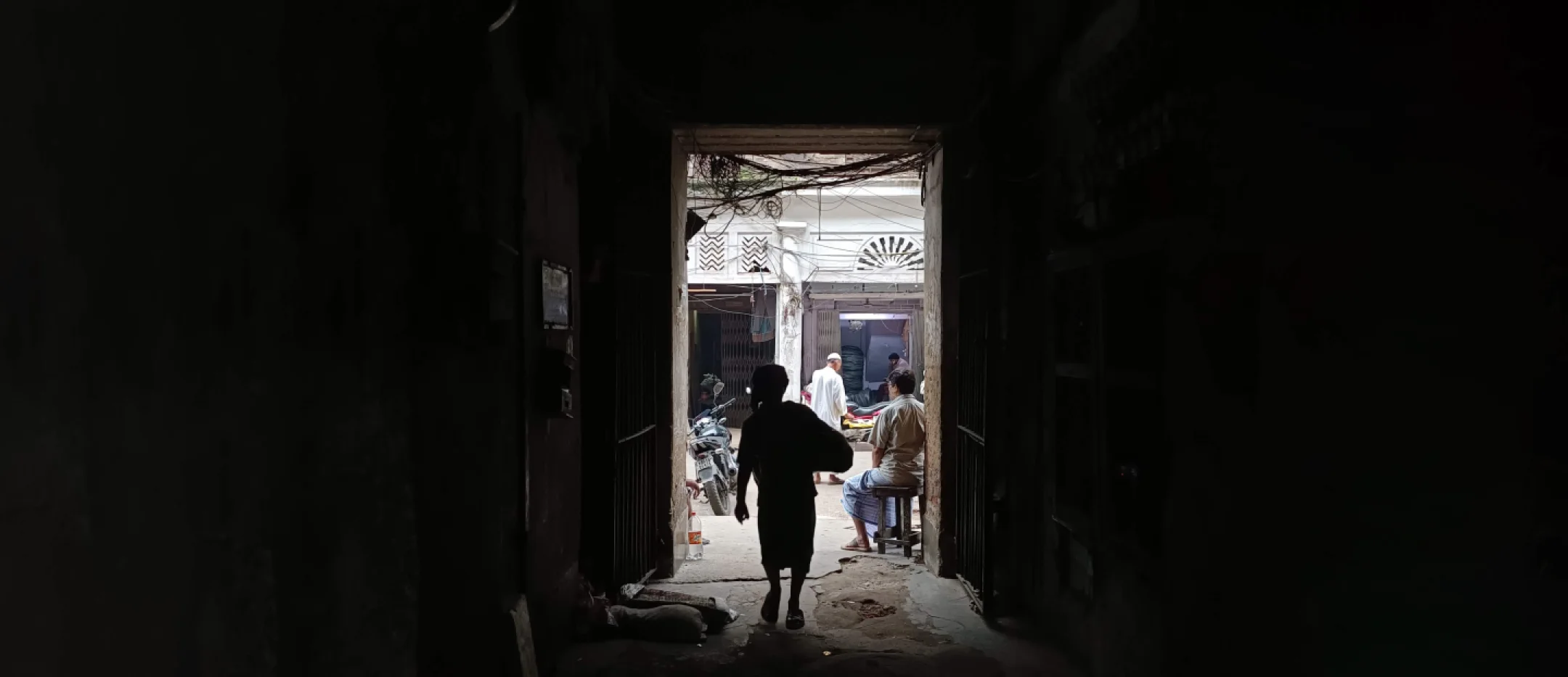The Bhistis, also known as water bearers, have been instrumental in supplying water to the residents of Kolkata for centuries. They were particularly vital before the construction of water supply pipes. The Bhistis distinctive trade, traditions, and way of life have left an indelible mark on the city.
Originating during the Mughal period when water carriers were appointed by the courts, the Bhistis soon found their way into the city of Kolkata. Equipped with a large, leather water bag called Mashqs, Bhistis navigated the narrow bylanes and crowded streets, ensuring a supply of water to households, markets, and even public avenues while trailing drop of water behind them. Their remarkable ability to carry heavy loads of water and their diligent work ethic earned them the respect and appreciation of local communities wherever they traveled.
Beyond their practical role as water carriers, the Bhistis have also contributed to the cultural tapestry of Kolkata. Today, they often gather in small groups, sharing stories, songs, and folklore that have been passed down through generations. Their attire includes traditional turbans, long flowing shirts, and waistbands which lends to their distinguished heritage.
However, modern infrastructure and piped water supply systems have considerably altered the role of the Bhistis. Many have had to find alternative sources of livelihood, and the once-thriving community now faces several challenges in preserving their legacy. With only a handful left, efforts are being made by scholars, organizations, and patrons to document and propagate (share) the stories of the Bhistis. Preserving their stories, traditions, and way of life is crucial so that future generations can be witness to their legacy as opposed to simply reading about them.
This story explores the life of a Bhisti who has been working in Kolkata for over four decades. The film not only showcases his life’s work and pride, and his joy in preserving a dying tradition.
Gunga Din, by Rudyard Kipling
“The poem tells the story of a heroic Indian water bearer named Gunga Din, who is a symbol of loyalty, courage, and self-sacrifice.”
Gunga Din is a poem written by Rudyard Kipling, first published in 1890. The poem tells the story of a heroic Indian water bearer named Gunga Din, who serves as a symbol of loyalty, courage, and self-sacrifice.
The poem is narrated by a British soldier stationed in India during the colonial era. He describes the challenging conditions and dangers they face in the hostile environment. Despite the hardships, the soldiers are inspired by Gunga Din, who faithfully serves them by carrying water and tending to their needs. Gunga Din is portrayed as an underprivileged individual, and yet he possesses an unwavering spirit and a sense of duty. He endures the harshest conditions, risking his life to bring water to the soldiers amid battle. Towards the end of the poem, the soldiers find themselves under attack and outnumbered. Gunga Din, at great personal risk, rushes forward to warn the soldiers of an impending ambush. He is shot and fatally wounded, but his sacrifice allows the soldiers to repel the enemy and emerge victorious.
“Gunga Din” explores themes of heroism, the bonds of camaraderie, and the complex relationship between the British colonizers and the people of India. It raises questions about societal hierarchies, prejudice, and the value of human life, regardless of social status or background. The poem has been praised for its vivid imagery, rhythmic verses, and its portrayal of Gunga Din as a symbol of loyalty and the indomitable spirit of the common man.
References
- APTV. (2011). INDIA: CALCUTTA: CITY RESIDENTS FACING ANNUAL WATER SHORTAGES. Retrieved from AP TV article
- Datta, R. (2012). Bhistis of Calcutta (Kolkata). WordPress. Retrieved from Bhistis of Calcutta (Kolkata) A vanishing tribe | Rangan Datta
- GetBengal. (2020). Story of the vanishing Bhistis in Kolkata. Retrieved from Story of the vanishing Bhistis in Kolkata
- Singh, G. (n.d.). The Vanishing Tribe Of Bhistis In Kolkata |. Retrieved from Vanishing tribe bhistis kolkata 101 traces
- Varade, A. (2021). Occupation of yore: Bhisti – the water carrier. Retrieved from Medium article
Image References:
Bhistis watering the roads in 1858; Mode of Watering the Streets of Calcutta, 1858 – PURONOKOLKATA
Bheestie- 1864–1869 by John Edward Saché; Bheestie (The J. Paul Getty Museum Collection)
Hasan, Our Bheestie (bhisti, or water-carrier) at Simla by Gertrude Ellen Burrard (1860–1928);
National Army Museum; Twitter link

